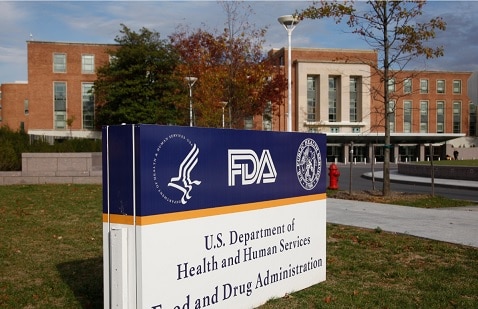
Biosimilars: Can the US catch up in 2016?
pharmafile | February 12, 2016 | Feature | Medical Communications, Sales and Marketing | Eli Lilly, Enbrel, FDA, Neulasta, Novartis, Pfizer, Sandoz, Zarxio, biosimilars
What are biosimilars?
Biosimilars are essentially the biological equivalent of generic drugs to their branded small-molecule counterparts (what Ibuprofen is to Nurofen, for example). They are very close (but not exact) copies of original biological medicines- made from living cells-, to which they have displayed extremely similar characteristics in terms of efficacy and safety profiles in clinical trials.
While generic medicines offer huge discounts versus the original once their patent protection expires, often 70-80%, the money payers can save by switching to biosimilars is slightly more modest- at around 15-30%. This is because biosimilars cost a lot more for companies to develop and produce than generics. They are larger and much more complex molecules, and, as living cells, are much more sensitive to imperfections in the manufacturing process, or in handling and transportation. Nevertheless, the potential savings from biosimilars are hardly negligible, and health systems now have to find more efficiencies than ever, so they are undoubtedly an attractive alternative to the original branded biologics.
What companies specialise in them?
Leaders in the biosimilars market include Sandoz (a Novartis subsidiary), Hospira, Teva, Samsung Bioepis, Celltrion and Dr Reddy’s Laboratories, but more and more companies are getting into the biological copycat game.
Why has the US lagged behind?
The first biosimilar drug hit the European market in 2006, and biosimilars have become established on the continent- already worth an estimated $5 billion in annual sales. From as early as 2005, the EMA established clear biosimilar guidelines which clarified requirements for quality, safety and efficacy, and clearly stated the difference between these and the approval of simpler generic drugs. Drug authorities worldwide, including Australia and Canada, soon followed.
But in the US, the regulatory pathways to approval have until recently been somewhat unclear and as a result, the process of getting a biosimilar product approved there has been rather slow. Biosimilars can never be exact copies of a drug, like a generic, only highly similar, as they are made from living cells. Therefore, it not as simple to prove their medical equivalence, and indeed the US only began to define the regulatory framework for them in 2010, after the new Obama government’s Patient Protection and Affordable Care Act was passed- five years behind the EMA’s ‘Guideline on similar biological medicinal products’. This act included the Biologics Price Competition and Innovation Act, which enabled an abbreviated approval pathway for biosimilars, and set the country on the road to clarity where such products are concerned.
What progress has the US made?
2015 was truly a game-changing year, evidenced by the FDA approving its first biosimilar drug in March- Sandoz’ Zarxio, (a copy of Amgen’s Neupogen (filgrastim)), which the Novartis generics division launched in the US in September, following an ultimately unsuccessful legal challenge from Amgen.
Having revealed draft guidelines for biosimilars in 2012, the FDA at last released final guidance documents in April 2015. These clarified the scientific basis for demonstrating biosimilarity to a reference product.
The agency has also established the Biosimilars Review Committee to assist and advise review staff as they analyse biosimilar development programs and related issues.
Zarxio’s March approval was followed up by an additional approval in the biosimilar category: Eli Lilly and Boehringer Ingelheim’s biosimilar to Sanofi’s blockbuster insulin, Lantus. However, in an example of the complexities affecting US uptake of the biological drug copies, the FDA did not acknowledge it as such, due to the fact that no insulin glargine products are yet licensed under the Public Health Service Act, meaning there is technically no reference product for a proposed biosimilar.
Towards the end of the year, the Agency also accepted for review two more Sandoz copies of Amgen drugs- Neulasta and Enbrel- the latter of which is marketed by Pfizer outside the US, and in February 2016, an FDA advisory committee also voted in favour of Celltrion’s biosimilar to J&J’s Remicade (infliximab), putting the product on course for full approval in April, when it may become the true second biosimilar approval in the country.
What to expect
From a regulatory perspective, as we enter 2016, the FDA is currently considering naming conventions for biosimilar drugs, to ensure patients can effectively distinguish between them and the reference product.
The biosimilars market is in something of a nascent phase right now, but as the months and years go on, there will be multiple biosimilar versions of original biologics hitting the market in quick succession, and so competition between manufacturers should drive prices down and enhance the potential for savings that will ultimately lead to increased patient access. This is particularly pertinent in the US, where drug pricing is such a key issue, and from where pharma companies derive such large percentages of their revenues.
Some $70 billion worth of patents (in sales terms) on biologic drugs are set to expire by 2020, and you can bet there are plenty of biosimilar manufacturers ready to take a slice of those sales with their own cheaper versions.
An early example is manufacturers including Amgen, Boehringer Ingelheim and the newly-‘Shired’ Baxalta going after AbbVie’s Humira with their own biosimilar versions of adalimumab. Amgen’s version was just accepted by the FDA for review, and a decision will be made by September.
Now the regulatory pathway has been properly established, it could be that 2016 proves the year when the biosimilar floodgates open in America.
Related Content

FDA approves ImmunityBio’s Anktiva bladder cancer treatment
ImmunityBio has announced that the US Food and Drug Administration (FDA) has approved Anktiva (N-803, …

EC approves Pfizer’s Emblaveo for multidrug-resistant infection treatment
Pfizer has announced that the European Commission (EC) has granted marketing authorisation for Emblaveo (aztreonam-avibactam) …

Roche’s Alecensa approved by FDA as lung cancer treatment
Roche has announced that the US Food and Drug Administration (FDA) has approved Alecensa (alectinib) …






